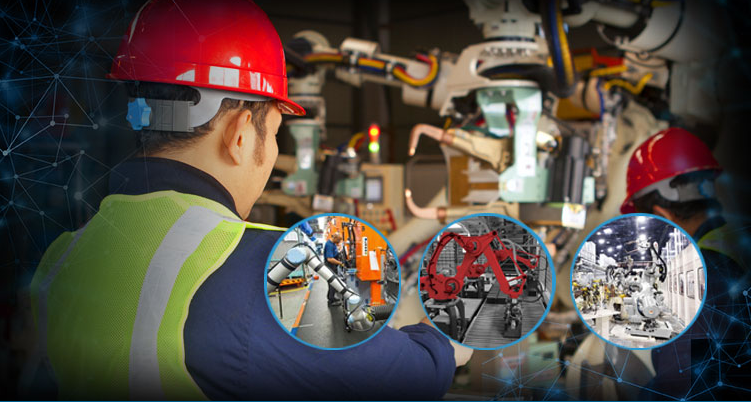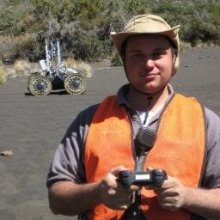
Robohub.org
National Robot Safety Conference 2017

I had the opportunity to attend the National Robot Safety Conference for Industrial Robots today in Pittsburgh, PA (USA). Today was the first day of a three-day conference. While I mostly cover technical content on this site; I felt that this was an important conference to attend since safety and safety standards are becoming more and more important in robot system design. This conference focused specifically on industrial robots. That means the standards discussed were not directly related to self-driving cars, personal robotics, or space robots (you still don’t want to crash into a martian and start an inter-galactic war).
In this post I will go into a bit of detail on the presentations from the first day. Part of the reason I wanted to attend the first day was to hear the overview and introductory talks that formed a base for the rest of the sessions.
The day started out with some Standards Bingo. Lucky for us the conference organizers provided a list of standards terms, abbreviations, codes, and titles (see link below). For somebody (like myself) who does not work with industrial robot safety standards every day, when people start rattling off safety standard numbers it can get confusing very fast.
Quick, what is ISO 10218-1:2011 or IEC 60204-1:2016? For those who do not know, (me included) those are Safety requirements for industrial robots — Part 1: Robots and Safety of machinery – electrical equipment — Part 1: General requirements.
Click here for a post with a guide to relevant safety standards, Abbreviations, Codes & Titles.
The next talk was from Carla Silver at Merck & Company Inc. she introduced what safety team members need to remember to be successful, and introduced Carla’s Top Five List.
- Do not assume you know everything about the safety of a piece of equipment!
- Do not assume that the Equipment Vendor has provided all the information or understands the hazards of the equipment.
- Do not assume that the vendor has built and installed the equipment to meet all safety regulations.
- Be a “Part of the Process”. – Make sure to involve the entire team (including health and safety people)
- Continuous Education
I think those 5 items are a good list for life in general.
The prior talk set the stage for why safety can be tricky and the amount of work it takes to stay up to date.
Robot integrator is a certification (and way to make money) from Robotic Industries Association (RIA) that helps provide people who come trained to fill the safety role while integrating and designing new robot systems.
According to Bob Doyle the RIA Director of Communications, RIA certified robot integrators must understand current industry safety standards and undergo an on-site audit in order to get certified. Every two years they need to recertify. Part of the recertification is having an RIA auditor perform a site visit. When recertifing the integrators are expected to know the current standards. I was happy to hear about the two-year recertification, due to how much changes with robotics technology over two years.
A bit unrelated but A3 is the umbrella association for Robotic Industries Association (RIA) as well as Advancing Vision & Imaging (AIA), and Motion Control & Motor Association (MCMA). Bob mentioned that the AIA and MCMA certifications are standalone from the RIA Certified Integrators. However they are both growing as a way to train industrial engineers for those applications. Both the AIA and MCMA certifications are vendor agnostic for the technology used. There are currently several hundred people with the AIA certification. The MCMA certification was just released earlier this year and has several dozen people certified. Bob said that there are several companies that now require at least one team member on a project to have the above certifications.
The next talk really started to get into the details about Robot System Integrators and Best Practices. In particular risk assessments. Risk assessments is a relatively new part of the integration process, but has a strong focus in the current program. Risk assessments are important due to the number of potential safety hazards and the different types or interactions a user might have with the robot system. The risk assessment helps guide the design as well as how users should interact with the robot . The responsibility to perform this risk assessment is with the robot integrator and not directly with the manufacturer or end-user.
One thing that I heard that surprised me was that many integrators do not share the risk assessment with the end-user since it is considered proprietary to that integrator. However one participant said that you can often get them to discuss it in a meeting or over the phone, just they will not hand over the documents.
After a small coffee break we moved on to discussing some of the regulations in detail. In particular R15.06 which is for Industrial Robot Safety standards, the proposed R15.08 standards for industrial mobile robot safety standards, and the R15.606 collaborative robot safety standards. Here are a few notes that I took:
Types of Standards
- A – Basic concepts — Ex. Guidance to assess risk
- B – Generic safety standards — Ex. Safety distances, interlocks, etc..
- C – Machine specific — ex. From the vendor for a particular robot.
Type C standards overrule type A & B standards.
Parts of a Standard
- Normative – These are required and often use the language of “shall”
- Informative – These are recommended or advice and use the language of “should” or “can”. Notes in standards are considered Informative
Key Terms for Safety Standards
- Industrial Robot – Robot manipulator of at least 3 DOF and its controller
- Robot System – The industrial robot with its end effector, work piece and periphery equipment (such as conveyor).
- Robot Cell – Robot system with the safe guarded spaces to include the physical barriers.

Case study that was presented of a 3 robot system in a single cell, and how it was designed to meet safety standards.
R15.06 is all about “keeping people safe by keeping them away from the robot system”. This obviously does not work for mobile robots that move around people and collaborative robots. For that the proposed R15.08 standard for mobile robots and the R15.606 standard for collaborative robots are needed.
R15.08 which is expected to be ratified as a standard in 2019 looks at things like mobile robots, manipulators on mobile robots, and manipulators working while the mobile base is also working. Among other things, the current standard draft says that if an obstacle is detected, the primary mode is for the robot to stop; however dynamic replanning will be allowed.
For R15.606 they are trying to get rid of the term collaborative robot (a robot designed for direct interaction with a human) and think about systems in regard to its application. For example :
…a robotic application where an operator may
interact directly with a robot system without relying on perimeter safeguards for protection in pre-determined,low risk tasks…
After all the talk about standards we spent a bit of time looking at various case studies that were very illuminating for designing industrial robotic systems, and some of the problems that can occur.
One thing unrelated, but funny since this was a safety conference, was a person sitting near the back of the room who pulled a roll of packing tape out of their backpack to tape over their laptop power cable that ran across the floor.
I hope you found this interesting. This was the 29th annual national robot safety meeting (really, I did not realize we had been using robots in industry for that long). If you want to find out more about safety and how it affects your work and robots make sure to attend next year.
I would like to thank RIA for giving me a media pass to attend this event.





